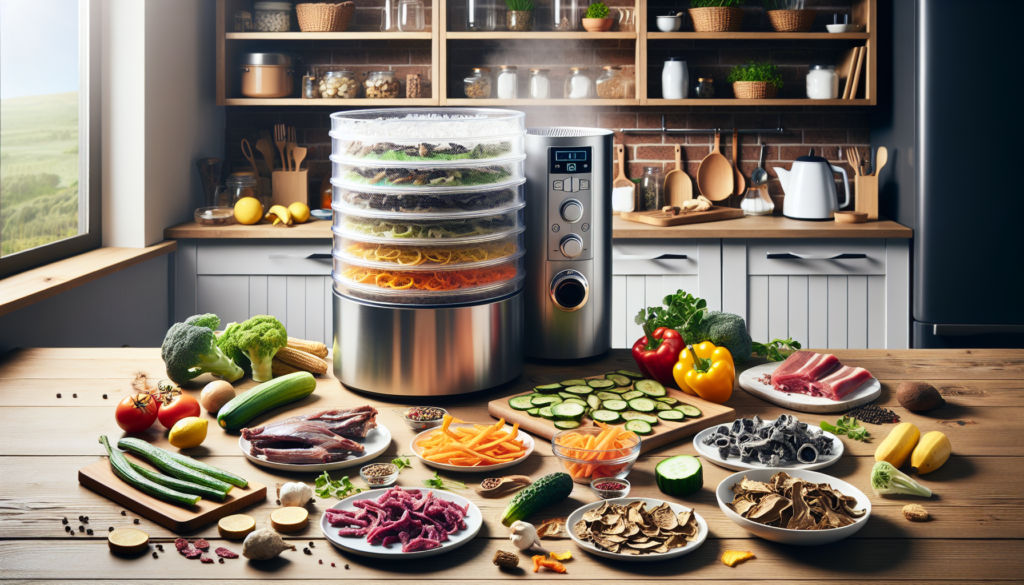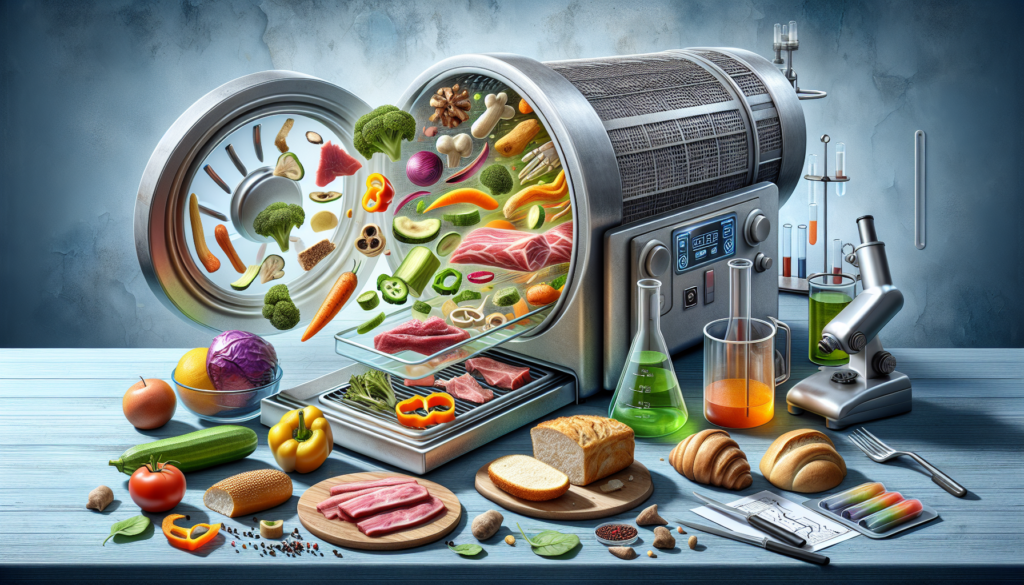Have you ever found yourself with a surplus of leftovers that you just can’t seem to finish before they go bad? Well, fear not, because freeze drying is here to save the day! This amazing process not only helps you preserve your favorite dishes for longer, but it also revitalizes them, maintaining their flavor and nutritional value. From fruits and vegetables to full meals, freeze drying offers a convenient and efficient way to make the most out of your leftovers. In this article, we will explore the ins and outs of freeze drying, providing you with practical tips and tricks to make the most of this preservation technique. So, grab a snack and let’s dive into the world of freeze drying!

I. What is Freeze Drying?
Freeze drying is a method of preserving food that involves removing the moisture from the food while maintaining its structure and flavor. It is a popular technique used in the food industry to extend the shelf life of various products, such as fruits, vegetables, meats, and even dairy. By freezing the food and then subjecting it to a vacuum environment, freeze drying removes the water content through a process called sublimation, where ice directly transitions into vapor without going through the liquid state. This unique preservation process allows the food to retain its nutritional value, taste, and texture over an extended period of time.
II. How Does Freeze Drying Work?
The freeze drying process consists of three main stages: freezing, primary drying, and secondary drying. First, the food is carefully frozen to low temperatures, usually below -40 degrees Celsius (-40 degrees Fahrenheit), to solidify the water within it. Once frozen, the food is placed in a vacuum chamber where the pressure is reduced, and the temperature is raised slightly. This change in environmental conditions causes the ice within the food to sublime, converting it directly from a solid to a gas without passing through the liquid phase. This step is called primary drying and is essential for removing the majority of the moisture from the food. Finally, during secondary drying, the temperature is increased further to remove any remaining moisture molecules, ensuring the food remains in a dry and stable state.
III. Benefits of Freeze Drying
Freeze drying offers numerous benefits that make it an attractive preservation method for both commercial and home use. Firstly, freeze-dried foods have an extended shelf life, often lasting several years without the need for refrigeration or preservatives. This allows for convenience and reduces food waste by providing a longer time frame in which to consume the food. Additionally, freeze-dried foods are lightweight and have a reduced volume compared to their fresh counterparts, making them easier to store, transport, and pack for outdoor activities such as camping, hiking, or emergency preparedness. Furthermore, freeze drying retains the natural flavors, colors, and nutrients of the food, providing a more enjoyable and nutritious eating experience.
IV. Revitalizing Leftovers with Freeze Drying
Leftovers are a common occurrence in many households, but often they go to waste due to spoilage or lack of enthusiasm to eat the same meal again. However, with freeze drying, you can give your leftovers a new lease on life. By freeze drying your leftover meals, you can preserve them for an extended period while ensuring their taste, texture, and nutritional value remain intact. This allows you to enjoy your favorite dishes even after they have been initially cooked. Whether it’s a comforting bowl of soup or a delicious pasta dish, freeze drying can transform your leftovers into convenient and long-lasting meals that can be enjoyed whenever you desire.

V. Freeze Drying Techniques for Leftovers
When it comes to freeze drying leftovers, there are a few techniques you can employ to ensure optimal results. Firstly, it’s important to choose leftovers that have a low moisture content to begin with, as the freeze drying process is primarily aimed at removing moisture. Foods like casseroles, stews, and baked goods tend to work well, while soups or dishes with high liquid content may require some modifications before freeze drying. Another technique is to portion your leftovers into individual servings before freeze drying. This allows for easier reconstitution later on, as you can thaw and enjoy single servings without having to thaw the entire batch. Lastly, it’s crucial to package your freeze-dried leftovers in airtight containers or vacuum-sealed bags to ensure they remain in a dry state and are protected from moisture and air.
VI. Step-by-Step Guide to Freeze Drying Leftovers
- Select leftovers with low moisture content.
- Portion the leftovers into individual servings.
- Place the portions on a tray or baking sheet and freeze them for a few hours.
- Transfer the frozen portions into a vacuum-sealed bag or airtight container.
- Place the bag or container into a freeze dryer, ensuring it is sealed.
- Set the freeze drying parameters according to the manufacturer’s instructions.
- Start the freeze drying process and allow it to run its course, which may take several hours or even days depending on the food and quantity.
- Once the freeze drying process is complete, remove the freeze-dried leftovers from the machine.
- Transfer the freeze-dried leftovers into airtight storage containers or vacuum-sealed bags.
- Label and date the containers for future reference.
- Store the freeze-dried leftovers in a cool, dry place away from direct sunlight.
VII. Tips and Tricks for Successful Freeze Drying
- Pre-freeze your leftovers before placing them in the freeze dryer to ensure a more efficient and effective drying process.
- Pay attention to the moisture content of your leftovers, as high moisture can lead to increased freeze drying time or inconsistent results.
- Experiment with different freeze drying times and parameters to determine the optimal settings for specific types of leftovers.
- Consider adding moisture absorbers, such as silica gel packets, to the storage containers to prevent any moisture reabsorption.
- Keep a record of your freeze drying experiments, including the type of food, freeze drying time, and any modifications made, to help refine your process and achieve the best results.
VIII. Common FAQs about Freeze Drying Leftovers
Q1: Can I freeze dry leftovers that contain sauces or gravies?
A1: Yes, you can freeze dry leftovers that contain sauces or gravies. However, it is recommended to thicken the sauce or gravy before freeze drying to minimize liquid content and ensure better results.
Q2: How long can freeze-dried leftovers be stored?
A2: Properly freeze-dried leftovers can be stored for several years if stored in airtight containers in a cool, dry place. However, it’s always good to check for any signs of spoilage, such as off-putting odors or changes in appearance, before consuming.
Q3: Can freeze-dried leftovers be rehydrated?
A3: Yes, freeze-dried leftovers can be rehydrated by adding hot water or liquid, depending on the type of food, and allowing it to reabsorb the moisture. The rehydration process may vary depending on the food and desired consistency.
IX. Conclusion
Freeze drying is a remarkable preservation technique that not only extends the shelf life of food but also revitalizes leftovers in a convenient and flavorful manner. By understanding the freeze drying process, incorporating effective techniques for leftovers, and following a step-by-step guide, you can successfully freeze dry your leftover meals and ensure they remain delicious and enjoyable for years to come. So don’t let those leftovers go to waste – give freeze drying a try and discover a whole new world of culinary possibilities!
